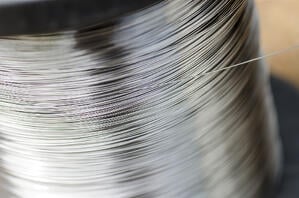 While stainless steel is famous for its resistance to oxidation and discoloration in most “normal” use cases, it’s important to note that no alloy is 100% impervious under all situations. For any formulation of stainless steel alloy, there is always some combination of temperature, chemicals, mechanical force, and other stress factors that could compromise the appearance of the steel.
While stainless steel is famous for its resistance to oxidation and discoloration in most “normal” use cases, it’s important to note that no alloy is 100% impervious under all situations. For any formulation of stainless steel alloy, there is always some combination of temperature, chemicals, mechanical force, and other stress factors that could compromise the appearance of the steel.
To protect your stainless steel wire forms and sheet metal products against discoloration, there are numerous questions that degreed engineers designing stainless steel products will need answered, including:
What Operating Temperatures Will the Steel Be Exposed to?
Different stainless steel alloys will have different reactions to elevated temperatures. In many cases, exposure to extreme temperatures will compromise the steel’s protective oxide layer, stripping it away and allowing rust to start accumulating.
Some alloys can better resist oxidation from high temperatures, which is a major factor in choosing a particular alloy to use. Also, extremely high temperatures might limit the viability of different coatings that might be used with the steel.
What Chemicals Do You Use?
Another leading cause of discoloration in stainless steel is the use of extremely caustic chemicals that override the steel’s protective oxide layer. For example, salt and other chlorides may compromise the outer layer of a piece of grade 304 stainless steel with ease.
Other alloys, such as grade 316 SS, are much less susceptible to discoloration and corrosion from salt.
How Will the Stainless Steel Be Cleaned?
Maintenance is a must for keeping any tool in top working condition. Basic cleaning to remove particulates from the surface of stainless steel can help prevent discoloration—unless the wrong tools and techniques are applied.
Iron or plain steel brushes should never be used to scour the surface of a stainless steel object. Nor should brushes that have been used to clean plain steel.
These brushes could compromise the integrity of the stainless alloy’s protective oxide layer by depositing plain iron molecules. Plain iron, once embedded in the surface of the steel, creates gaps in the oxide layer that allow rust particles to accumulate.
What’s the Maximum Load Weight for the Steel?
While not normally a contributing factor to the discoloration of stainless steel, the load on a piece of stainless steel wire or sheet metal can be a contributing factor to damage when other stress factors are present.
Excessive weight well beyond the maximum load of the steel alloy can cause it to deform. This may alter other characteristics of some stainless steel alloys as the crystalline structures of the steel atoms change. This could, in turn, impact other performance characteristics of the steel, such as its resistance to discoloration.
Sharp, sudden impacts could also cause similar issues. This is why degreed engineers need to know not only the maximum load weight of a basket, but how it will be moved from one manufacturing process to the next. The method of moving a basket affects what impact risks there are, as well as what special attachments the basket might need (handles, hoist rings, flat/rounded corners, etc.).
These are just a few of the things that a mechanical engineer will need to know prior to creating a custom stainless steel basket or tray so as to ensure top performance and minimize the risk of discoloration.
Of course, to maximize the useful life of any custom metal form, it’s important to take proper care of it—using it in the conditions for which it was designed, routinely cleaning it using appropriate processes, and not putting too much weight on it beyond the recommended amount prescribed by the engineer who designed it.
With a well-optimized starting design and proper care, you can prevent the discoloration of your stainless steel baskets and trays for years or even decades—longer than the useful life of most polymer compounds.



.gif)


